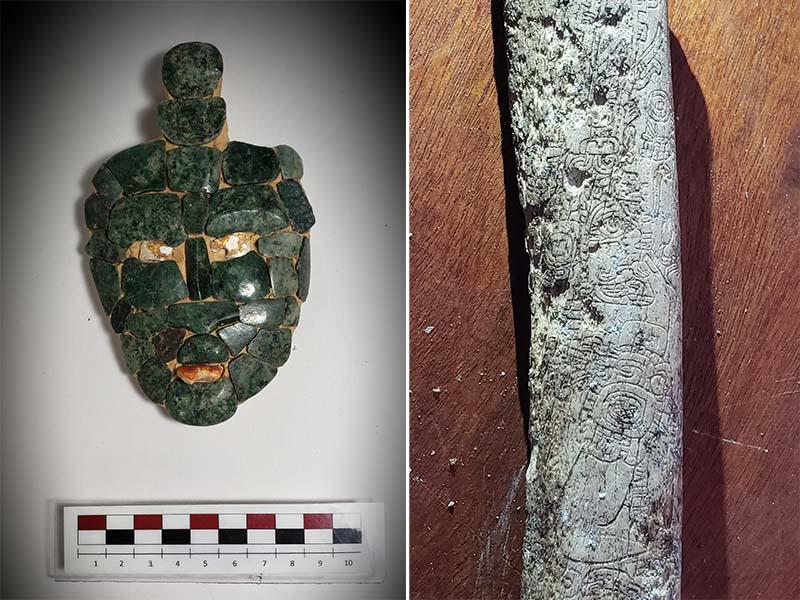Tulane University archaeologists discovered a 1,700-year-old Maya king’s tomb in Chochkitam, an archeological site in northeastern Guatemala.
The tomb contains funeral offerings, including a mosaic jade mask, carved human femur bones, 16 blood-filled oyster shells, a stingray spine and ceramic vessels, cups and bowls. The carvings on the femur bones depict the Maya king adorned with elaborate ornaments while holding the mosaic jade mask he was buried with. The archaeologists believe the carved bones could be those of his father or grandfather.
“That’s like hitting the jackpot when it comes to recovering lots of information from a very small number of objects,” said Francisco Estrada-Belli, the lead archaeologist who discovered the tomb in 2022. “We can reconstruct a whole section of Maya history or any history of any civilization if we find things the way they were left originally.”
The tomb dates back to 350 CE, placing it in the Classic Maya period spanning 250-900 CE. Little is known about the Maya during this period because of looting, drug cartel violence in the area and difficulty navigating the jungle.
The discovery reveals Maya culture and ritual practices: the rare oyster shells were filled with blood using a stingray spine in a Maya bloodletting burial ritual; the mosaic jade mask, his most precious ornament, is a reproduction of the Maya storm god; the carved images and hieroglyphs on the femur bones depict the power and authority of the king; the recovered residue indicates that the ceramic cups were filled with a fermented chocolate drink that was exclusive to Maya nobility and royalty.
The carved images and hieroglyphs indicate possible political alliances. When the Maya had an important political ally, they imitated each other as a form of adulation. In this case, the carved images of the buried king share stylistic similarities to the kings of Tikal and Teotihuacan.
“It’s not just any image; it follows certain stylistic canons and stylistic rules,” Estrada-Belli said. “Based on these stylistic traits, we can establish a political connection between these kings.”
Looters had sacked the pyramid, but a hole in the temple room remained undisturbed. After digging only six feet, the archeologists discovered the skeleton and funeral offerings. The tomb’s ceiling collapsed due to natural decay, but the artifacts were largely intact.
Estrada-Belli and his team used light detection and ranging technology, commonly known as LiDAR, to locate the tomb. From an airplane, the LiDAR instrument emits a million laser pulses per second. When a pulse hits an object, the distance from the object to the plane is recorded. Using the LiDAR map and GPS information from the plane, archaeologists are able to map the area in three dimensions. LiDAR has transformed archaeological exploration.
“We can create very accurate maps of what’s on the ground,” said Estrada-Belli. “That allows us to see every little thing that’s on the surface down to half a meter.”
The discovery is monumental for Tulane history, as it comes 100 years after the first Tulane expedition of Chochkitam in 1924, led by archaeologist Frans Blom. Additionally, the discovery marks 100 years since the establishment of Tulane’s Middle American Research Institute.
“I’m very proud to be part of Tulane, and I’m just so happy to be able to make the discovery that coincides with the discovery my predecessors made,” Estrada-Belli said. “Tulane is one of the best universities for Maya archaeology.”
Estrada-Belli has been working to preserve the artifacts in hopes of extracting more information. The carved femur bones have been sent to a lab at Harvard University, where he hopes that DNA will confirm the relation between the buried king and his predecessors.























Leave a Comment